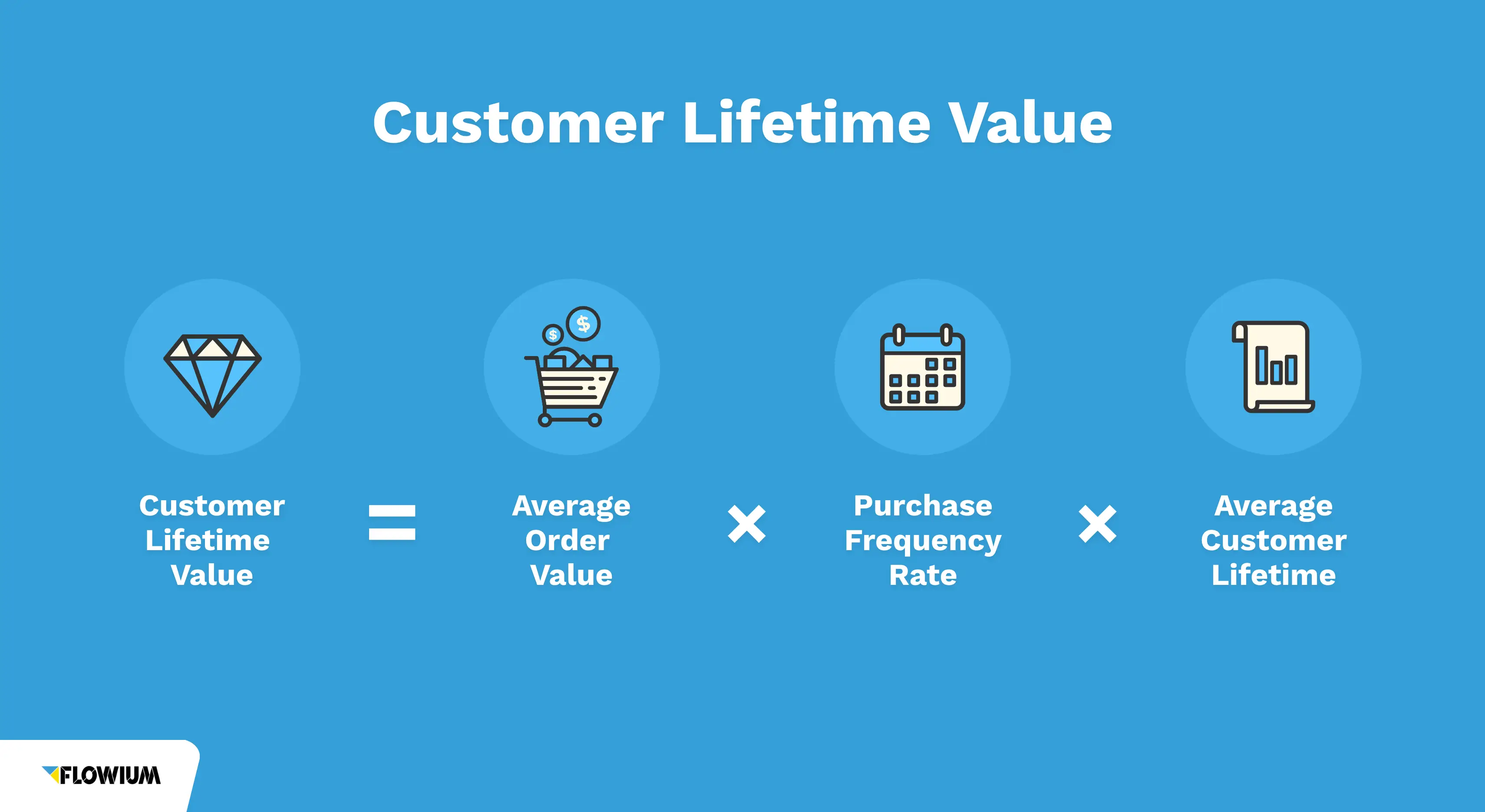Customer experience (CX) is a crucial business differentiator in today's highly competitive market. According to a Gartner survey, 83% of marketing leaders say customer experience (CX) is their top priority for 2023.
Businesses use data analytics to gain valuable data into customer behavior and preferences.
Now what is this data analytics?
Data analytics examines and interprets data sets to make informed decisions. Data analytics is an essential component of customer experience leadership. A 2023 survey by IBM found that 94% of CX leaders say that data analytics is essential to their CX strategy.
By leveraging customer data effectively, businesses can optimize their products, services, and processes to provide exceptional customer experiences.
In this article, we will learn about customer experience analytics, explore its significant benefits, and how companies utilize it to transform customer interactions and drive growth.
What is Customer Experience Analytics?
Customer experience analytics gathers, organizes, and analyzes consumer data to enhance how customers engage with your company. It includes data from various sources, such as user reviews, complaints, interactions, behavior, social media activity, and support.
Businesses make data-driven decisions to improve the overall customer experience by evaluating this data to find trends, patterns, and areas for development.

The Benefits of Data Analytics in Enhancing Customer Experience
The benefits of data analytics in enhancing customer experience are the following:
Personalize the Experience
By discovering common patterns and themes among various user groups, data analytics enables organizations to customize the customer experience.
By studying customer preferences, businesses can develop customer personas and customize their goods and services to satisfy particular needs. This customization boosts sales and consumer pleasure, with McKinsey suggesting that individualized experiences can result in a 5–10% rise in sales.
Identify Bottlenecks
Businesses may solve these problems and improve the experience by identifying pain points and bottlenecks in the customer journey through data analysis.
Businesses receive essential insights into areas needing improvement by listening to customer feedback and monitoring user behavior. It guarantees a seamless and trouble-free client experience.
Predict Market Changes
Businesses are able to predict market changes and consumer behavior with near precision by leveraging data analytics. Companies may spot and seize emerging trends before their rivals using a well-crafted user persona and insights into consumer pain concerns.
Companies like Apple and Amazon thrive at leveraging customer experience data to promote innovation and consumer delight. They rely heavily on their ability to stay ahead of the curve.
Improve Customer Support
A successful customer experience depends on efficient customer service. Businesses can learn more about customer support concerns and create plans to offer quicker, more effective service by studying customer data.
Social media engagement and direct customer interactions can also help support agents understand the origin of critical issues and provide appropriate solutions.
Additionally, implementing chatbots as part of the marketing strategy can alleviate the workload of support agents and offer quick and accurate responses to customer queries.
And implementing chatbots isn't that tough. Meet BotPenguin, the home of chatbot solutions. For every chatbot solution you can name, BotPenguin can do it, making omnichannel support look easy:

Solidify Brand Loyalty
Data-driven customer experience analytics can help businesses identify gaps in the customer experience and improve brand loyalty.
Companies foster a stronger customer connection by addressing limitations and enhancing the overall experience. It leads to increased loyalty and advocacy.
Hosting educational sessions through webinars and engaging with customers on social media are also effective strategies for building thought leadership and boosting brand loyalty.
Make Data-Driven Decisions
Data analytics provides businesses with accurate and reliable insights that guide decision-making processes. Executives, marketers, and other stakeholders can base their decisions on concrete information rather than subjective opinions by analyzing customer data.
This approach helps align business objectives with customer needs, ensuring that the decisions made are in the company's and its customers' best interest.
Track Performance
An essential aspect of customer experience analytics is tracking performance.
By utilizing AI-powered tools and data synchronization options, businesses can generate reports that indicate whether the customer experience has improved or worsened over a specific duration.
Tracking performance allows for the identification of critical metrics and areas for improvement. Doing this enables businesses to enhance the customer experience continuously.
Customer Experience Metrics to Track
When it comes to customer experience analytics, specific metrics are precious in measuring the effectiveness and impact of your efforts. These metrics provide insights into customer loyalty, satisfaction, engagement, and more.
Here are six key metrics to prioritize when gathering and analyzing CX data:
Net Promoter Score (NPS)
Net Promoter Score is an essential CX metric that assesses customer loyalty and determines their likelihood of recommending your brand to others. It is measured from -100 to +100, with higher scores indicating greater customer satisfaction.
By regularly gauging NPS through surveys or questionnaires, businesses can track their customer base's loyalty and identify improvement areas.

Customer Satisfaction Score (CSAT)
The Customer Satisfaction Score measures how well your products or services fulfill customer needs. It provides a rating of customer satisfaction based on specific interactions or experiences.
By gathering feedback through surveys or direct feedback channels, businesses can pinpoint areas where customer satisfaction is high or low. It allows them to make targeted improvements.

Customer Engagement Score
Customer Engagement Score highlights customer interaction with your brand's products or services.
Businesses are powered to measure the effectiveness of marketing campaigns, product features, and user experience improvements by analyzing customer engagement metrics.
Increasing engagement indicates an improved customer experience, while low engagement may signal the need for further enhancements.
Customer Churn Rate
Customer Churn Rate measures the rate customers discontinue their engagement with your brand. It is a critical metric for business growth and customer experience assessment.
By monitoring churn rates, businesses can identify areas of weakness and take proactive steps to reduce customer attrition. It ensures a more positive and enduring customer experience.
Customer Lifetime Value (CLV)
Customer Lifetime Value assesses the financial value of a customer. It counts the value throughout their relationship with your brand.
By calculating CLV, businesses can identify their most valuable customer segments and effectively make data-driven decisions to address their needs. This metric helps personalize the customer experience and tailor strategies to retain high-value customers.

Customer Effort Score (CES)
Customer Effort Score tracks the ease or difficulty customers experience when interacting with your brand. It is usually obtained through a single-question survey or feedback mechanism.
A lower CES indicates that customers find it easier to interact with your brand, resulting in a more positive customer experience.
How to Choose the Right Data Management Tools
Choosing the proper data management tools for enhancing customer experience through data analytics is crucial for any business. Here are key points to consider:
Define Objectives
Clearly outline your goals in improving customer experience through data analytics. Identify the specific aspects of customer interaction you want to enhance.
Data Collection
Assess tools that can gather diverse data types – customer feedback, behavior, and demographics. Ensure they can collect real-time and historical data.
Data Integration
Choose tools that can easily integrate seamlessly with your existing systems. Compatibility ensures a smooth flow of data for analysis.
Scalability
Opt for tools to handle your current data volume and scale as your business grows. Scalability is vital for long-term use.
Analytics Capabilities
Look for tools offering advanced analytics features like predictive modeling, sentiment analysis, and machine learning. These insights are invaluable for improving customer experiences.
User-Friendly Interface
The tools should have an intuitive interface, ensuring your analytics team can effectively interpret and utilize the data.
Cost-Effectiveness
Evaluate the costs involved, considering your budget constraints. Balance the features offered with the overall investment.
Vendor Reputation
Research the vendors thoroughly. Opt for reputable companies with a track record of successful implementations in your industry.
Support and Training
Ensure the vendor provides adequate training and support services. Proper training maximizes the effectiveness of your team in utilizing the tools effectively.
Real-World Examples of Companies Using Data to Improve Customer Experience
Let's explore a few real-world examples of companies that have successfully utilized customer data to drive improvements:
Example 1: Amazon
Amazon is renowned for its customer-centric approach and uses customer data extensively to personalize the shopping experience.
By analyzing customer practices and purchase history, Amazon provides personalized product recommendations, making each customer's shopping journey more tailored and enjoyable.
Example 2: Netflix
Netflix utilizes customer data to curate personalized content recommendations, providing users with a highly customized streaming experience.
By analyzing viewing habits, preferences, and ratings, Netflix can suggest movies and TV shows that align with individual tastes, enhancing customer satisfaction and engagement.
Example 3: Starbucks
Starbucks leverages customer data through its mobile app to offer personalized promotions and rewards.
By analyzing customer purchase patterns, Starbucks can tailor offers to individual preferences, ensuring a delightful and rewarding experience for loyal customers.
Conclusion
In conclusion, data analytics has become a powerful tool for businesses of all sizes for enhancing the customer experience.
Through insightful customer data analysis, businesses can gain a profound understanding of their clientele, enabling them to deliver personalized, efficient, and meaningful interactions. Data analytics empowers businesses to predict customer needs, tailor services, and anticipate trends, fostering customer loyalty and satisfaction.
Businesses can differentiate themselves and drive growth by personalizing interactions, identifying pain points, predicting market changes, improving support, solidifying brand loyalty, making data-driven decisions, and tracking performance.
Real-world examples like Amazon, Netflix, and Starbucks demonstrate the effectiveness of customer experience analytics. As companies leverage data effectively, the customer experience landscape will evolve, shaping the future of successful organizations.
In this digital age, where customer expectations continually evolve, data analytics is the linchpin for sustainable growth and customer-centricity. By investing in robust data analytics strategies and technologies, businesses meet customer demands and exceed them. Their customers create memorable and seamless experiences.
Embracing data analytics is not merely a tool; it's a transformative force that propels businesses toward customer-centric excellence.
Frequently Asked Questions (FAQs)
What does a customer experience analyst do?
A customer experience analyst gathers and examines data to comprehend how customers engage with a business. They create recommendations, spot trends in the data, and enhance the whole client experience.
List some customer experience analytics software.
Some customer experience analytics software are the following:
BotPenguin Analytics
Zendesk Analytics
Qualtrics Customer Experience
Salesforce Einstein Analytics
Medallia Experience Cloud
How can big data improve customer experience?
Big data provides insights into customer behavior, preferences, and patterns. It helps companies personalize their offerings, anticipate customer needs, and provide better customer service based on data-driven insights.
Is the data science market saturated?
No, the data science market is not saturated. The demand for data scientists is rising quickly as data-driven decision-making becomes more significant across various businesses. A lack of qualified data scientists persists.
Is using analytics to improve customer engagement worth it?
Absolutely! Businesses may better understand their customers, present relevant content, personalize interactions, and boost customer happiness and loyalty by using analytics to improve customer engagement. Worth the financial commitment.



